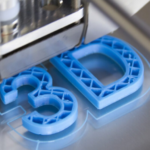Mass manufacturing, also known as mass production, is the process of creating large quantities of a product through standardized production methods. This manufacturing method has been used for over a century and has enabled companies to produce products efficiently and at a lower cost. In this blog, we will discuss the advantages and disadvantages of mass manufacturing, as well as its impact on the economy and the environment.
Advantages of Mass Manufacturing:
- Lower cost: The main advantage of mass manufacturing is the ability to produce a large quantity of products at a lower cost per unit. This is due to economies of scale, which means that the cost of production decreases as the quantity produced increases.
- Efficiency: Mass manufacturing enables companies to create products quickly and efficiently. Standardized production methods allow for the use of specialized machinery and equipment, which can increase production speed and reduce the need for manual labor.
- Consistency: Mass manufacturing allows for consistent production quality. Standardized production methods and quality control procedures ensure that every product is manufactured to the same specifications.
- Innovation: Mass manufacturing can facilitate innovation by allowing for the production of new products at a lower cost. This can lead to the creation of new markets and the growth of existing ones.
Disadvantages of Mass Manufacturing:
- Lack of flexibility: Mass manufacturing is not flexible and can be difficult to adapt to changes in demand or product design. This can result in excess inventory or product shortages.
- Environmental impact: Mass manufacturing can have a negative impact on the environment. The production of large quantities of products can result in excess waste, pollution, and the consumption of non-renewable resources.
- Quality control issues: Mass manufacturing can sometimes result in quality control issues. If a problem arises in the production process, it can affect a large quantity of products.
- Human labor: Mass manufacturing can lead to the replacement of human labor with machines, which can have a negative impact on employment.
Impact of Mass Manufacturing:
- Economic growth: Mass manufacturing has been a key driver of economic growth, particularly in developing countries.
- Standardization: Mass manufacturing has led to the standardization of products, which has made them more affordable and accessible to consumers.
- Globalization: Mass manufacturing has facilitated globalization by enabling companies to produce products in one location and sell them in another.
- Resource consumption: Mass manufacturing has resulted in the consumption of large quantities of natural resources, which has had a negative impact on the environment.
In conclusion, mass manufacturing has both advantages and disadvantages. While it has enabled companies to produce products efficiently and at a lower cost, it can also result in environmental impact and quality control issues. As the manufacturing industry continues to evolve, it will be important to find ways to balance the benefits of mass manufacturing with its potential drawbacks.




